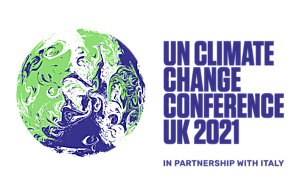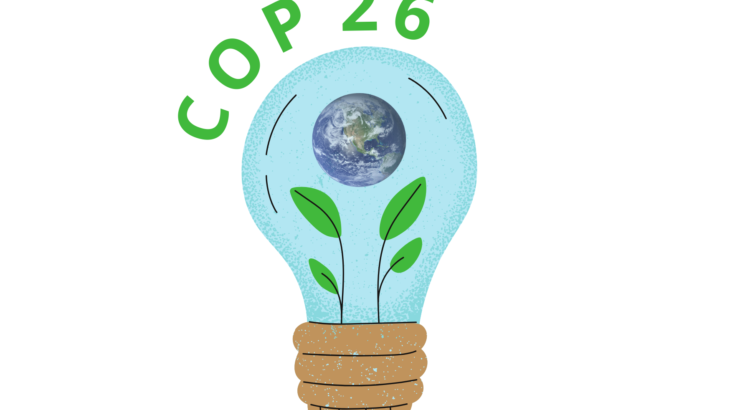Is the COP a flop?
Though it has been almost two months since the end of COP26, we still find it important to report on it. After all, climate-related news will only become more significant with time, rather than less. Most of you probably saw the COP26 headlines on the news or social media. However, it may not be clear to all of you what it all meant. What was COP26 about? And why was it (not) effective? We dove a little deeper into the main discussion points of the COP and whether we can speak of a success or a COP flop.

COP what?
The COP, or Conference of the Parties, is the most important decision-making body of the UN Framework Convention on Climate Change (UNFCCC). The UNFCCC aims to stabilise greenhouse gas concentrations to a level that would prevent anthropogenic harm to the climate system [1]. In other words, human interference is dangerous to the climate, leading to e.g. problems with food production and species extinction, and we have to prevent that point from ever being reached. COP26 then, is the 26th session of the COP. Ideally, one conference is held every year, each time in a different country. This time, the COP took place in Glasgow. According to the COP26 website, the COP brought different parties together, so that the goals of the Paris Climate Agreement (COP21) and the UNFCCC could be met, with haste [2]. COP21? Isn’t that five years ago? Well, yes. But it was a very important COP. This is because COP21 led to a new, important international climate agreement: to keep global warming between 1.5 and 2 degrees celsius. This so-called Paris Climate Agreement applies to all countries, however, how each country is supposed to reach that goal is still rather ambiguous. What has become clear though, is that limiting global rises in temperature to 1.5-2 degrees is becoming more and more unlikely given our current trajectory [14, 15]. So, COP26 is supposed to help countries reach the Paris Climate Agreement and the UNFCCC goals, but will it?
Climate justice
The poorest 50% of the world is responsible for only 7% of total global greenhouse emissions between 1990-2015. But the poorest 50% are also most vulnerable to the disasters of climate change. The richest 10% of the world, on the other hand, are responsible for >50% of global greenhouse emissions [3]. The disparity between who is causing the climate crises, and who has to pay the steepest price, demands climate justice. Polluting countries must not only systemically change, but also pay for the damage they have caused. We will discuss climate finance later as well. But first, what did COP26 do about climate justice?
It could be claimed that COP26 and climate conferences in general involve too much talk and too little action. Or, to put that in Greta’s words: “It should be obvious that we cannot solve a crisis with the same methods that got us into it in the first place” [4]. Rich countries made a pledge at COP15 to jointly mobilise climate finance of $100 billion per year but they failed (more on that 2 paragraphs down). Debates raised questions on the historical responsibility of countries, and how this shapes the future. Since COP15, the money flow was insufficient to make up for the increasing climate risks and disasters, signifying resistance of developed countries to help developing countries adapt to the climate crisis [5]. Despite COP26 recognising this failure, as expected by many, it also allowed for some optimism and hope. The ‘Just Transition Declaration’ was adopted, which “recognizes the need to ensure that no one is left behind in the transition to a net zero and climate resilient future” [6]. By signing this declaration, countries prove a willingness to engage with loss and damage arrangements, and progress to pinpoint inequalities between rich and poor in relation to climate change [7]. So, COP flop? Even though the new declaration sparks some hope, we need action now. Can we really wait another year to conclude that we have once again fallen short?
Net zero targets
Most large economies announced Net Zero targets at the COP26. However, Net Zero emissions as a concept was also strongly criticised as being meaningless greenwashing. Therefore, a call was made to focus more on short- term emission cuts by 2030 [8].
For the first time at a COP conference, an explicit plan was developed to reduce the use of coal, including the near-immediate closing of coal- fired power stations without carbon capture and the phasing out of subsidies for oil and gas. However, under pressure from China, India, Saudi Arabia and Iran, this mission was, at the last moment, watered down to a weaker commitment. The final Glasgow Climate Pact speaks of ‘speeding up efforts’ to gradually close polluting coal-fired power stations and the ‘phasing down’ instead of ‘phasing out’ of subsidies [9]. This disappointing last-minute change, which came into being through backroom politics [10], led to the absence of real commitments to cut greenhouse gas emissions.
Climate finance
As has been mentioned already, polluting countries must pay for their polluting actions. This has also been acknowledged and since the Paris Agreement (COP21) it was agreed that rich and developed countries should pay $100 billion every year until 2025 to developing countries. Upon further reflection, this is not the case: until this point only Germany, Norway, and Sweden are financing their part [11]. This looks like quite a big flop. At COP26 it is again acknowledged that developing countries are really in need of climate finance. So luckily, some progress has been made and a process has been set up to comply with these financial needs. Besides only financing until 2025, the countries have also committed to a longer-term plan [12].
Another highlight from the COP26 regarding finances is the cutting of investments in fossil fuels. There is an attempt to involve the biggest private companies (controlling $130 trillion) in meeting net zero targets and to drive the finance away from the fossil fuel industry [13].
Concluding remarks
From the looks of it, COP26 has gone some ways into recognising the shortcomings of previous COPs. However, it has also highlighted the tensions between countries concerning climate change mitigation. Whilst it is understandable that it is extremely difficult to get everyone on the same page regarding assigning responsibility and taking measurable action, it is clear that the current compromise is not the one the Earth agrees with.
The COP attempts many things. However, hoping that such commitments and attempts will lead to our goals being reached, may just be wishful thinking. Many are therefore seeing COP26 as a COP flop. Do you agree?
Find out more
We tried to summarise the important points of the COP26 for you, but the truth is that there is still much to be learned and much to be discussed. We highly recommend that you check out the following Instagram accounts (Earthrise/ Jack Harries/ Finn Harries/ Climatereality/ EcoResolution/ cop26uk), or have a look at the series Seat at the Table on YouTube.
By the Blog Team
